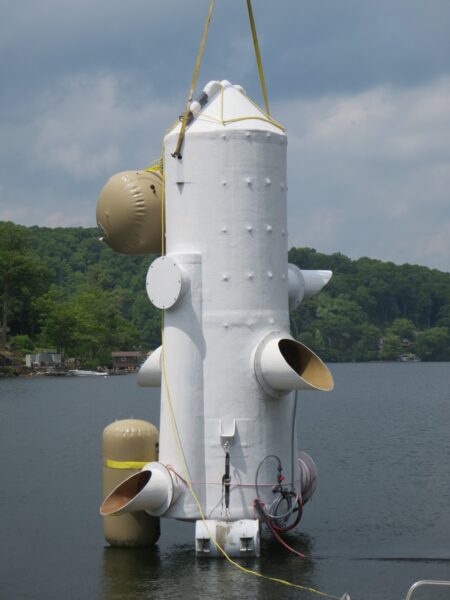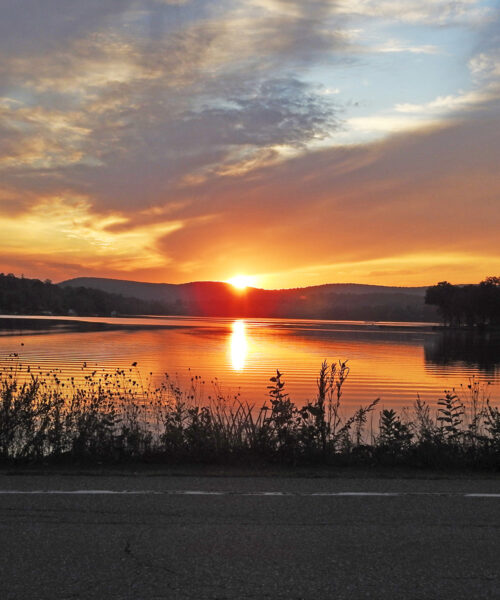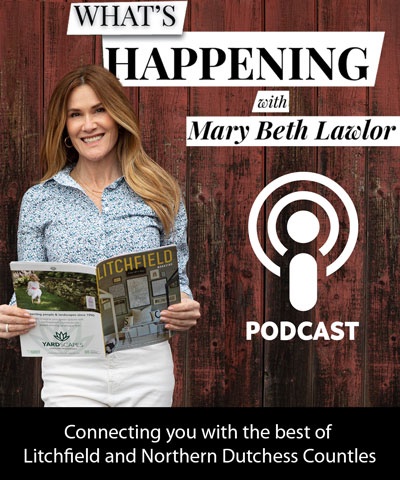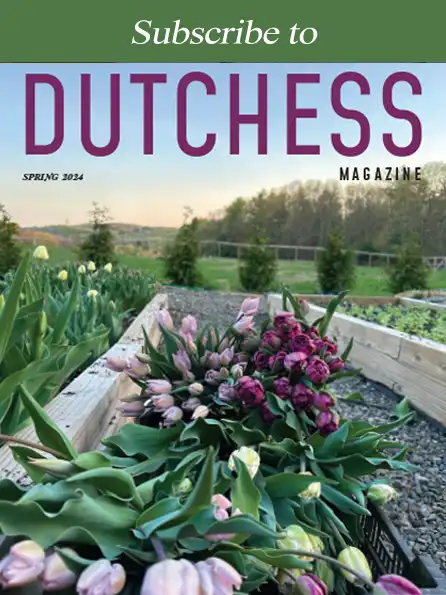July 8, 2025
By Clementina Verge
Renowned for its timeless beauty and tranquility, Lake Waramaug is one of Connecticut’s most cherished and picturesque destinations. Its crystalline waters invite recreation and relaxation, yet this natural splendor is no accident. It reflects decades of meticulous restoration, shaped by science, community, and an unwavering commitment to preservation.
“In the 1970s, it looked like a giant bowl of pea soup,” recalls Christine Adams, a Lake Waramaug Board of Directors member whose family has kept a cottage on the lake for five generations.
Tom McGowan concurs, reminiscing about the days when stepping into the lake meant surrendering to its opaque depths. At the time, algae blooms fueled by phosphorus runoff clouded waters, limiting visibility to just two to four feet. Swimming waned, boating became difficult, property values declined, and the ecosystem neared collapse.
Out of this crisis, McGowan assembled the Lake Waramaug Task Force, a grassroots coalition of citizens united by one common goal: To revive the lake. The mission became a model for environmental stewardship. Among the pioneers was Robert Kortmann, whose innovative lake aeration system—a scientific breakthrough, born in his garage—is now used nationwide.
“It’s the best work that’s been done on any lake, in any state, period,” declares McGowan.
This year, as it celebrates its 50th anniversary, the group has rebranded as the Lake Waramaug Conservancy, reflecting its broadened scope and renewed dedication to be a permanent, science-led conservation organization.
“It’s been—and continues to be—a huge effort,” reflects executive director Sean Hayden. Scientific breakthroughs played a pivotal role, he explains, including an award-winning aeration system that revitalizes the lake’s oxygen levels.

An astounding success has been eradicating non-native invasive aquatic plants—achieved through two decades of mapping and meticulous hand-pulling by divers, who use a suction harvesting system in an approach that demands precision and persistence.
Water visibility has increased to depths of up to 19 feet—a recovery achieved without the chemicals that would have delivered only temporary relief, Hayden notes.
The Conservancy employs limnologists—freshwater scientists—to study the lake’s ecosystem and to guide interventions. From cultivating zooplankton to naturally control algae, to oxygenating the lake and stabilizing stream banks to prevent harmful blooms, the Conservancy’s efforts are vital and innovative, says board chair Lee Vance.
Protecting the lake is “a shared responsibility,” notes treasurer Peary Stafford, who acknowledges the Warren Land Trust’s pivotal role in acquiring the 200-acre Tanner Farm—critical for further safeguarding the lake’s water quality.
Today, Lake Waramaug is a pristine haven for boating, fishing, and swimming, with public beaches serving the towns of Kent, Warren, and Washington. Yet its future is not guaranteed, as climate change pressures threaten even protected ecosystems.
The Conservancy invites all who value natural beauty to play a role in its preservation—through philanthropy, volunteerism, and advocacy. Every August, a community day offers residents and visitors a chance to engage more deeply, learn, and contribute.
In a world where natural treasures too often vanish too soon, Lake Waramaug stands as a testament to what can be saved through science and stewardship.—lakewaramaug.org






















